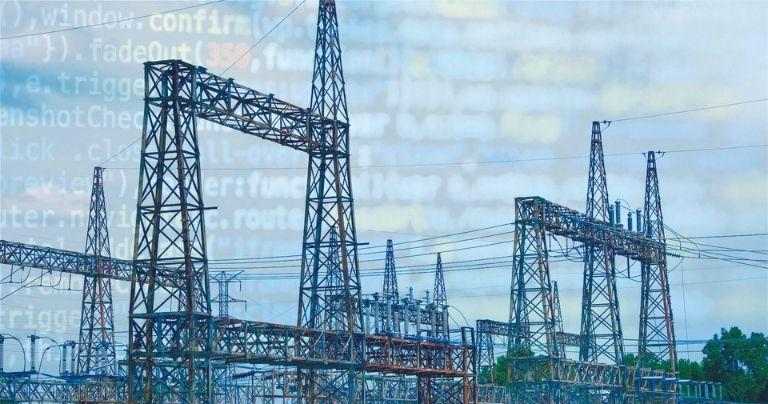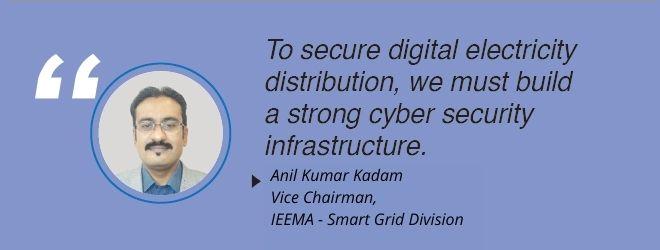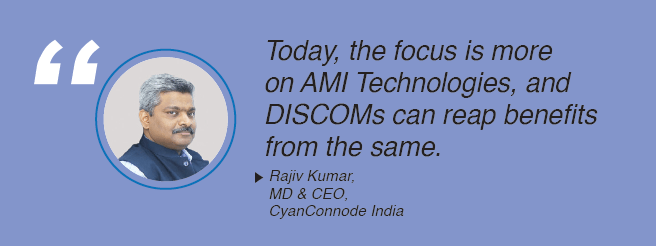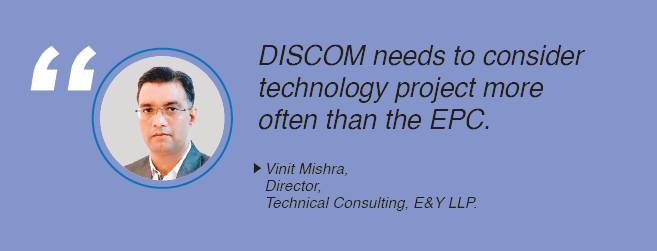SMART OPPORTUNITIES AND TECHNOLOGIES TO SECURE INDIAN POWER BUSINESS
By EPR Magazine Editorial December 23, 2021 12:52 pm IST
By EPR Magazine Editorial December 23, 2021 12:52 pm IST

The primary idea of smart electricity is to implement smart solutions through extensive utilisation of technology and ensure adequate availability and accessibility of connected infrastructure. Today, numerous technologies are being put in place to enact on the idea of connected grid system to cater the requirement of an uninterrupted power supply. With the help of smart technology, in securing the grid, smart metering technology, power providers are making constant efforts to provide efficient products, solutions and applications to meet the paradigm for a smart city.
Cyber security reference architecture and reference architecture
According to Anil Kumar Kadam, Vice Chairman, IEEMA – Smart Grid Division, “Cyber security reference architecture basically has two connotations; the constructional part, where a meter talks to head end and to the DCU head end. Another one is towards the needs of the technology user like consumers and their needs.”
Basically, you analyse needs from an operational context, and then convert those needs systematically to requirements which is more systemic, and so, you’re trying to get into systems. Today, we may have more than 10-20 flavours of SCADA specifications alone in the country. Every utility has its own flavour, but less do we know whether that functionality is needed in the way it has been specified.
Since cyber-security reference architecture is a relatively new topic for India, it has its own work stream. But now, all of a sudden, we’re getting into digital. We are not yet entirely aware of the security measures placed in a meter, an RTU, or a relay that needs to be embedded. The concern remains is, how will we connect the connect layer’s security features to the edge layer; and how many stakeholders will be linked to it? From a cyber security standpoint, we’d like to put out a clear defense-indepth strategy that overlays reference architecture atop smart Docs. To maintain that level, we must be very detailed in defining the standards, whether they are 62443 standards, their sub-standards being applied to the layers, systemic standards, technological specifications, and how they will be integrated with the cyber security reference. We’ve just begun, but we anticipate being able to deliver on time before major programmes such as RDSS is released.
We are also trying to work with PFC and say that these are all the learning that the industry has got from RAP DRP or APDRP or from projects. Can you probably look at it from this angle and make it bring the pragmatism that we have brought in from that angle. So, architecture technical and the pragmatism from the industry is the reference we are talking about.
According to Rajiv Kumar, MD & CEO, CyanConnode India, Cyber security is crucial, especially now that we have so much digitisation, because it will allow us to reach all the way to the end of the distribution value chain. It is vital since failing to do so could result in a major problem if a critical breach occurs. I’m certain that IEEMA will provide an adequate standard, but I’m delighted to disclose that at CyanConnode, we’ve been working on cyber security for a long time, long before we launched pilot programmes in India and UK initiatives like S1 and S2.
Our network is also certified by GCHQ basically, which manages the secure network for AMI6 So, this already certified that level of cyber security person we are at our organisation taking care of already and since India is also moving to large scale, we will be happy to contribute more and working closely with IEEMA to really take it forward for the AMI domain.

Private and State DISCOMs on Smart Metering Applications
“All AMIs are built around DISCOMS. A private DISCOM is one of the government’s DISOCMs. Yes, we all know how efficiently the AT & C losses are controlled, but some of the government DISCOMs are also doing fairly well in four or five states”, says Rajiv. Yes, one of the points in terms of payment security that Vinit was highlighting in AMI is that the core of the AMI storey is based on a pay model, basically pay as you stay. Because, in many states, the revenue that comes out of AMI deployment and the payout that happens from DISCOMs to the EMI SP is already a lot of savings. So, the DISCOMs don’t have to pay anything from their pocket as the revenue is already being generated from the smart meters. So DISCOMs don’t have to pay, so when we talk about private DISCOMs, their AT & C losses are small, I’d say very small. And that’s where they are still in a bind about what they should do.
According to Vinit Mishra, Director – Technical Consulting, E&Y LLP, “I agree with the fact that Rajiv communicated. So it’s not just the loss reduction programme which DISCOMs are considering, and it’s not just a mere MBC project, it’s a plus-plus project, and MBC is the outcome of this particular initiative. So, while it is core technology projects, and again, based on numerous discussions with the utilities, PSU, and other stakeholders, I could sense that most of the stakeholders are considering this programme for the EPC programme, which ultimately is not the right thought.”
My view is that it’s the core technology part. If the technology is at the heart of this entire program, so, if we talk about handling systems or communication, mesh networks or now, technology has already been successfully tested for a 10 kilometre range.I’m not sure how many of the viewers are aware of what transpired in Maharashtra. There was only one occasion in Maharashtra where I could say fewer than 100 data sources were integrated, but we’re talking about smart metering, so we’re talking about 250 million data sources.
We’re talking about 250 million data sources and sending them to a remote site that isn’t safe. As a result, we have a comprehensive understanding of the necessity of cyber security, which we would not be able to do at the moment of backend system integration. So the MDM to billing integration had MDM integration. So, all these things are taking the journey towards the conclusion that DISCOM needs to consider its technology project more so than EPC.

Challenges in terms of technology selection, standardisation and interoperability
In general, any entity would conduct a proof of concept, then a pilot, and then scale it up and such. However, we have seen a large-scale adoption of things in India, so there are plenty of solutions and experience available globally. The only thing is, there was a word of EPC the approach of providing oil to one person or one engineering procurement company that will not work; at the base, it has to be partnership, you know, and after you select the OEMs who will be bringing the solutions here, and of course, there is this EPC or a system integrator who will be bringing the integration, and how long and how effective is the partnership with all players with the user with the technology user.
Enhancing the power quality
The focus right now is on AMI deployment. One of the advantages is that in UP, when we had the 750k deployment, we were looking at the average power factor for all of those 750K consumers, and the average power factor was around 0.84, and we were having a meeting with DISCOM management in DISCOM headquarters, then we were calculating that team this there is a deduction normally the billing happened in kWh active power. So, we calculate with point 06 this reduction multiplied by the amount of units for those consumers’ v/s millions for that specific month. Due to the loss of power factor, how many million could not be built? That was a clear indication that it is not a benefit that DISCOM will receive, which is something that anyone can calculate today to see if DISCOM is performing the correct capacity compensation. So the level of insight you get with 15 minutes of granular data at each consumption point, incredible potential, we haven’t even scratched the surface, and everything is displayed in a simple dashboard, or analytics, as we call it.
As a result, these items have a lot of promise. We’ve already completed a large project in our front-ranking sample, and we’re also putting in a lot of effort into the analytics. That provides insight to consumers, as well as discounts, which have distinct requirements and might be one of the industry’s responsibilities to truly assist them in delivering these.

The opinion
It’s past time for us to rethink our procurement strategy. Of course, there are technical restrictions, and things will evolve, but everything will be resolved in partnership. You’ll see how well applications are integrated and handled in driver DISCOMs. You’ll see that data has been efficiently disseminated throughout all applications. It’s not like they’re employing cutting edge technology. It’s the same technology that’s been used in government, but government works in silos most of the time. The distinction is that this cooperation and integration is ongoing, and technology evolution is ongoing; also, the bond contract is higher here. So, the purchasing technology should not be done on an L1 basis, nor should it be done in an EPC way. The focus should be on collaborations.
We use cookies to personalize your experience. By continuing to visit this website you agree to our Terms & Conditions, Privacy Policy and Cookie Policy.